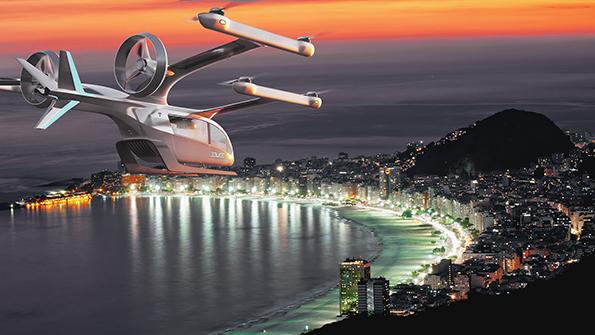
Advanced air mobility (AAM) may seem futuristic, but it’s not far off.
However, preparing for AAM to become operational needs planning since it doesn’t seamlessly slide into today’s current transportation infrastructure.
When Tesla introduced its first electric car, a $109,000 Roadster in 2008, that raised similar issues. It was a new, unproven car manufacturer and the first to use lithium-ion battery cells in a production model. Charging options were limited. After installing more charging stations and introducing more affordable models the company took off, delivering 936,172 electric cars in 2021.
In the next few years, the first electric vertical-takeoff-and-landing (eVTOL) vehicles could be certified. Joby Aviation is building its first S4 production prototype and plans to start commercial service in 2024. Archer Aviation aims to unveil its production model in 2023 and receive FAA type certification for its four-passenger vehicle in 2024. Lilium anticipates certification of its ducted-fan vectored-thrust Lilium Jet in 2025. Eve UAM targets type certification of its eVTOL in 2026.
While eVTOLs could operate from existing fixed-based operators at general aviation airports or from vertiports, there’s still the issue of charging stations. There is no standard for charging eVTOLs, so the situation could be similar to needing various power adapters to charge your electronics when traveling abroad. Organizations such as ASTM, SAE and Eurocae are working on a megawatt charging standard, as are the manufacturers through different collaborations.
“That said, I don’t think that we will have a full universally adopted connector standard upon launch, from where I see the different players today,” says Addison Ferrell, head of Americas for Skyports, who spoke at an AAM panel during SXSW.
He predicts that there could be two or three standards at launch, and Eve UAM CEO Andre Stein agrees.
Eve, an Embraer company expected to merge with a Zanite Acquisition special-purpose acquisition company this quarter, participates in several concept of operations groups to create blueprints for AAM operations. Eve led the UK Air Mobility Consortium to lay out a plan to transport passengers between vertiports and London Heathrow and London City airports. While the London blueprint will be different from ones in Miami or Rio de Janeiro, “You start to see the differences and . . . patterns. A lot of the solutions can be interchangeable straight away or they can be a blueprint for thinking about the differences,” Stein says.
Although Eve is a startup born from Embraer X, it has the backing of Embraer, which differentiates it from the others. It has secured letters of intent for 1,825 aircraft from airlines, lessors, helicopter operators and ridesharing companies. “This is not the first time Embraer has designed, built, certified and supported aircraft. So the fact that we have access to this massive network for the aftermarket on Day 1, it’s a big differentiator. It would take millions of dollars, if not hundreds of millions of dollars, and decades, for someone else to get to that point,” Stein says.
Given that some eVTOL manufacturers aren’t thinking about maintenance services yet, Eve’s Embraer pedigree may well give it a power boost over other eVTOL startups.





